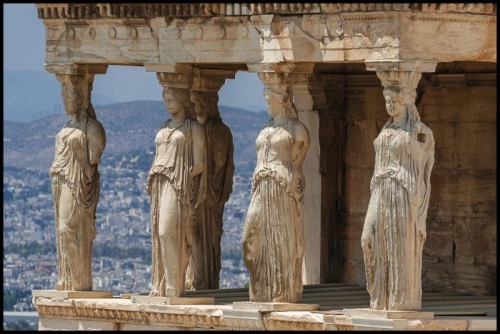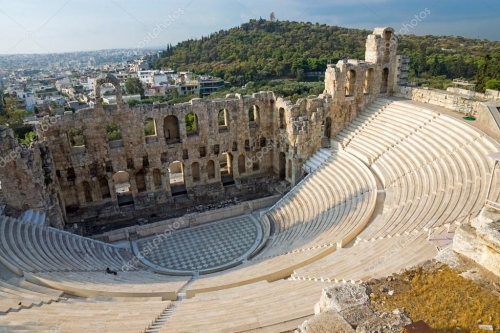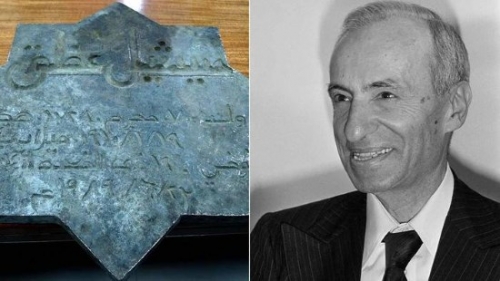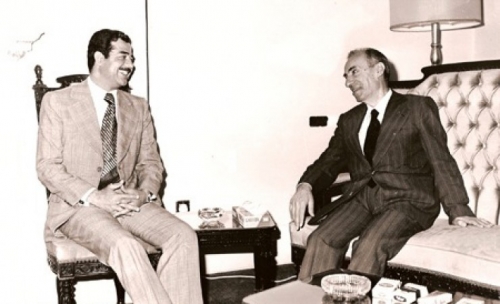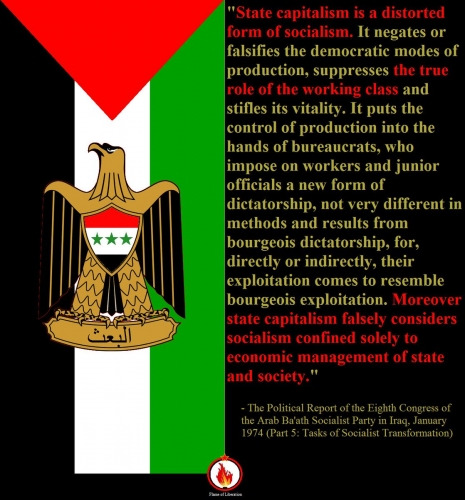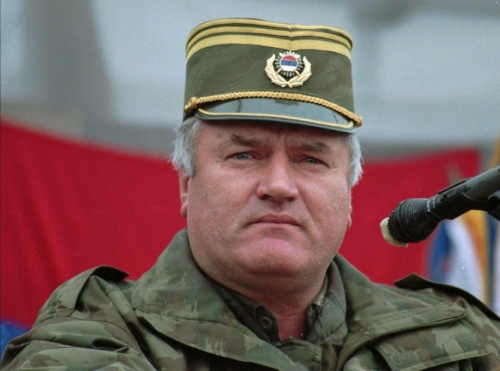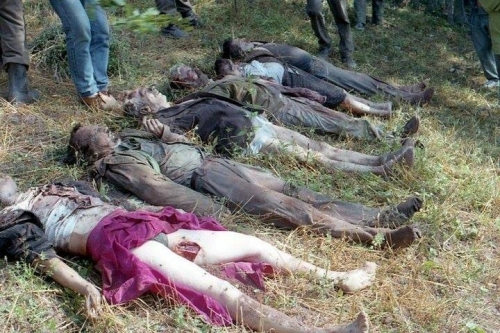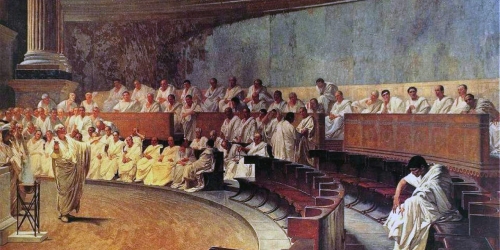FIN janvier 2018, à Lefkosia (nom turc de Nicosie), à l’instigation du président turc Recep Tayyip Erdogan, des nationalistes ont attaqué le journal Afrika qui avait critiqué l’offensive contre les Kurdes de Syrie (opération Rameau d’olivier) et établi un parallèle avec l’intervention à Chypre en 1974. Cette violence illustre les rivalités qui affligent l’île. Sur le territoire de Chypre, la répartition du pouvoir est complexe : au nord, la République turque de Chypre du Nord-RTCN, une zone peuplée de Chypriotes turcs, occupée par l’armée turque depuis 1974 ; au sud, un espace contrôlé par la République de Chypre, où le pouvoir est exercé par des Chypriotes grecs. Issues d’un conflit, ces deux entités sont séparées par une zone tampon où se trouve stationnée depuis 1974 une force d’interposition de l’ONU, la Force des Nations Unies chargée du maintien de la paix à Chypre (UNFICYP). Ajoutons qu’après l’indépendance de Chypre en 1960, la Grande-Bretagne a conservé deux bases militaires (Dhekelia, Akrotiri), sur la côte sud. La proximité de cet espace insulaire avec le Proche-Orient contribue à expliquer cet état de fait. Le poids de l’histoire est considérable et plusieurs acteurs extérieurs ont influé ou continuent d’influer sur l’évolution de l’île.
-
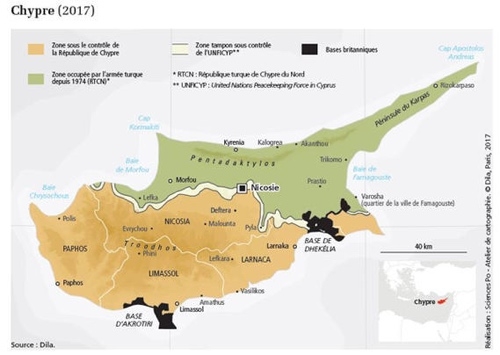
- Carte de Chypre en 2017.
- Source de cette carte de Chypre en 2017 : Mathieu Petithomme « Chypre : l’impasse des pourparlers de réunification », Questions internationales n°87 - septembre-octobre 2017, La documentation Française.
I. Un carrefour insulaire
L’île de Chypre se situe en Méditerranée orientale, très près des côtes de Turquie, de Syrie, du Liban, d’Israël et d’Égypte. Cela la place au contact direct d’une zone particulièrement instable : le Proche-Orient. La tumultueuse histoire de cette région pesa constamment sur les Chypriotes. L’île connut différents centres de pouvoir, aujourd’hui disparus ou délaissés. En 1192, la maison des Lusignan prit la direction du royaume et en fixa la capitale à Nicosie. La ville se trouvait idéalement située : sur la rivière Pedieos, pour l’approvisionnement en eau ; au cœur de l’île, donc équidistante des différentes régions ; dans la plaine de la Mésorée, principale zone agricole, pour l’alimentation des citadins. Nicosie est l’épicentre de tous les événements importants qui marquèrent l’évolution de l’île depuis près d’un millénaire. Moins connu que celui qui traversait Berlin entre 1961 et 1989, un mur de séparation matérialise, au cœur de la capitale, la coupure du pays en deux. La division politique de l’île, la zone tampon instituée en 1964 à Nicosie puis généralisée en 1974 et l’emprise des bases britanniques (Dhekelia, Akrotiri) fragmentent le territoire de Chypre. La découverte récente d’hydrocarbures offshore suscite des tensions autour de la délimitation des zones économiques exclusives des États riverains.
Chypre est peu étendue : 9 251 km², ce qui la place derrière la Sicile, la Sardaigne ou la Crète, à peu près à égalité avec la Corse. Ce territoire est marqué par les caractéristiques de l’insularité, plus ou moins pesantes selon les périodes de son histoire : un relatif isolement, des particularismes, une économie en partie dépendante de l’extérieur, des difficultés à maîtriser son sort.
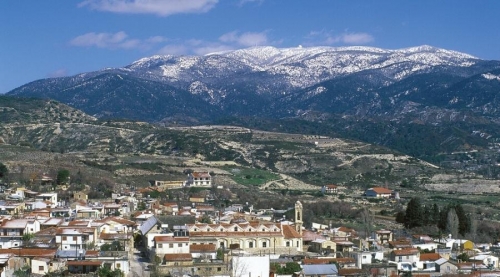
Plus arrosé que la chaîne de Kyrenia, le massif du Troodos est le château d’eau de l’île, source de plusieurs fleuves ou rivières (notamment le Pedieos) qui viennent irriguer la plaine fertile de la Mésorée. Mais la sécheresse du climat méditerranéen est particulièrement marquée, ce qui pose depuis toujours le problème des disponibilités en eau. L’existence des habitants, ainsi que le développement des aptitudes agricoles et des activités touristiques, dépendent de la plus ou moins grande capacité à mettre en place et à entretenir des systèmes hydrauliques efficaces. L’agriculture, autrefois prospère et source importante de richesse, occupe aujourd’hui une place modeste dans la vie économique (2,3 % du PIB de la République de Chypre). Les troubles dans l’île tout au long du XXe siècle ont entravé la modernisation de l’agriculture de la Mésorée, la grande plaine centrale. La coupure de l’île a ruiné les exploitations dans la partie nord. Depuis plus de quarante ans, les habitants attendent la mise en œuvre du programme d’aménagement promis par Ankara pour améliorer l’agriculture de la zone turque.
Chypre occupant une position de carrefour, son insularité ne l’empêcha pas de profiter très précocement de la révolution néolithique. Elle fut ensuite incorporée à toutes les grandes constructions politiques proche-orientales de l’Antiquité, tout en préservant une plus ou moins grande autonomie jusqu’à la domination macédonienne. Elle choisit l’hellénisme dès la période achéménide et appartint au vaste empire d’Alexandre, puis le diadoque Ptolémée en prit le contrôle. Après les conquêtes de Pompée en Orient, Chypre intégra l’Empire romain. Lors du partage du IVe siècle, elle échut à l’Empire romain d’Orient. Durant tout le Moyen-Âge, Chypre fut une plate-forme importante des échanges commerciaux et des affrontements entre l’Orient musulman et les puissances chrétiennes. Elle tomba aux mains de l’Empire ottoman, sous lequel son économie périclita et la population chrétienne souffrit. Elle appartint à l’empire colonial britannique de 1878 à 1960. Pour Londres elle eut une valeur stratégique variable : brièvement importante pour contrer l’avancée russe en Méditerranée à la fin du XIXe siècle, cruciale pendant la Première Guerre mondiale pour affronter l’Empire ottoman, considérable depuis la Seconde Guerre mondiale pour peser sur l’évolution du Proche-Orient. Aujourd’hui, la République de Chypre argue de cette situation de carrefour pour encourager l’implantation d’entreprises étrangères. Elle valorise le très riche patrimoine culturel accumulé au fil de ces différentes époques pour attirer les touristes étrangers.

Dans l’Antiquité, Chypre fut le principal fournisseur de cuivre du bassin méditerranéen. Cette ressource généra une importante activité métallurgique aujourd’hui pratiquement disparue. Les exportations de matière première et de produits finis contribuaient largement à la prospérité de l’île. Temps révolus : les gisements sont épuisés et une seule mine reste en activité, celle de Skouriotissa. Les habitants tentent désormais de faire des sites d’extraction une attraction touristique. Le sous-sol ne recèle aucune autre ressource notable. Cela a contribué à l’absence d’activité industrielle significative jusqu’à nos jours (10,6% du PIB de la République de Chypre). Découvert à partir de 2009 dans la région maritime comprise entre l’Égypte et la Turquie, le « bassin du Levant » recèlerait, selon les estimations de l’US Geological Survey, 3 400 milliards de mètres cubes de gaz naturel. Des experts comparent ce gisement à celui de la Mer du Nord. En 2011, d’importantes réserves ont été localisées au large de la côte sud de l’île. La République de Chypre entend bien s’appuyer sur ce pactole pour améliorer sa situation économique. Mais la mise en exploitation du gisement Aphrodite se heurte au problème des investissements et aux revendications de la Turquie.
L’île participa de tout temps aux échanges maritimes en Méditerranée, mais la valorisation de cet atout est limitée par les sanctions que la Turquie a prises à l’encontre des navires battant pavillon chypriote ou ayant fait escale dans un port de la République de Chypre. Toutefois, cette dernière, à l’instar de la Grèce, tire parti de sa longue tradition navale pour offrir un pavillon de complaisance (2% de flotte mondiale, soit1 053 navires totalisant une capacité de 33 Mt de port en lourd) qui contribue pour 5% au PIB du pays. Ceci, joint à une politique fiscale “attractive“ et à un système bancaire peu regardant, vaut à la République de Chypre une réputation douteuse et la présence de personnages ou d’entreprises pas toujours recommandables. Cette particularité remonte à la guerre civile libanaise (1975-1990), qui provoqua le transfert des activités bancaires de Beyrouth vers Nicosie. La fin de la Guerre froide a entraîné l’afflux des fortunes russes (notamment à Limassol où l’on décompte 30 000 résidents russes). Cela a contribué à amplifier les activités des banques chypriotes. Les difficultés de ces dernières sont à l’origine de la très grave crise financière qu’a connue le pays en 2008-2013. Le pays dut faire appel à l’Union européenne qui le plaça sous surveillance et lui imposa des réformes. La crise est officiellement terminée depuis 2016. La disponibilité d’importantes quantités de capitaux explique que la construction immobilière ait connu un essor important. Les investissements s’orientent également vers le tourisme (favorisé par le climat, l’omniprésence de la mer et le capital culturel) qui est devenu le secteur le plus important de l’économie chypriote (15% du PIB de la République de Chypre, qui reçoit 3 millions de visiteurs par an). De son côté, la RTCN tente de devenir un “casino flottant“ pour les ressortissants du Proche-Orient mais cela ne suffit pas pour lui éviter de stagner dans le marasme économique.
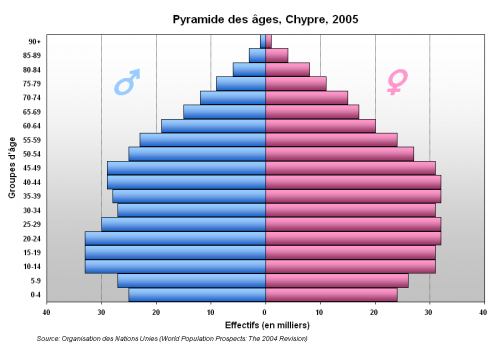
La population de Chypre est faible : 1 116 500 habitants. Les habitants sont inégalement répartis dans l’espace. Si les faibles densités s’expliquent en partie par les conditions naturelles (relief inhospitalier, notamment le massif du Troodos), le dépeuplement du Nord résulte de l’expulsion des Chypriotes grecs lors de l’invasion turque en 1974. L’implantation de colons turcs venus d’Anatolie est loin d’avoir compensé cette perte. Les statistiques démographiques, fragmentaires, portent avant tout sur la République de Chypre. La population affiche un vieillissement marqué : 15,16 % de la population ont moins de quinze ans, 29,4 % ont moins de 25 ans, 11,8 % ont 65 ans ou plus. Avec 1,47 enfants par femme, le remplacement des générations n’est plus assuré. Comme partout où il se produit, ce phénomène obère l’avenir.
Dans la partie turque, le niveau de vie serait trois fois plus bas que dans la partie grecque.
Avec un indice de développement humain élevé (0,856), la République de Chypre se situe au 33e rang mondial (au niveau de Malte ou de la Pologne, légèrement en-dessous de la Grèce et largement au-dessus de la Turquie). Les dépenses d’éducation atteignent 6,4 % du PIB et le taux d’alphabétisation de la population dépasse 99 %. Cela garantit une main-d’œuvre qualifiée, mais n’empêche pas le chômage (10% de la population active de la République de Chypre) car l’activité économique est insuffisante (la crise économique a provoqué le départ de 25 000 personnes). Les dépenses de santé représentent 7,4 % du PIB et l’espérance de vie est assez élevée : 81,6 ans pour les femmes, 75,8 ans pour les hommes. Un niveau comparable à celui de la Pologne ou des États baltes. La Turquie affiche des performances bien inférieures. D’ailleurs, selon les estimations, dans la partie turque, le niveau de vie serait trois fois plus bas que dans la partie grecque.
La population de Chypre est hétérogène. La délimitation du périmètre d’attribution de la nationalité chypriote (question des colons turcs) dans la perspective d’une réunification constitue l’un des points débattus dans les négociations. Le nombre est un facteur important pour la répartition du pouvoir et des ressources dans la perspective qui semble la plus adaptée au cas chypriote : la mise en place d’un État fédéral associant deux entités fondées sur l’appartenance communautaire. Par conséquent, les chiffres qui circulent sont sujets à caution. En l’absence de recensement contemporain fiable, les extrapolations se basent sur celui de 1954. À cette date, les Chypriotes grecs représentaient 80,2 % de la population et les Chypriotes turcs 17,9 %. Avant la partition, les Chypriotes grecs étaient présents sur l’ensemble de l’île et les Chypriotes turcs étaient disséminés un peu partout (mais regroupés dans 45 enclaves depuis 1964). En 1974, les transferts forcés de population ont vidé la partie nord de ses habitants grecs et la partie sud de ses habitants turcs. Après une décennie de ségrégation spatiale, il s’est produit un processus d’épuration ethnique.
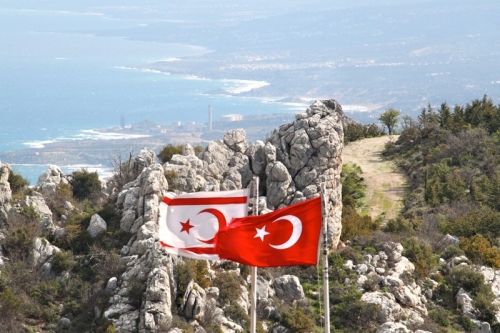
Les deux parties de l’île ont des institutions politiques distinctes. Elles jouissent d’un régime démocratique, mais la partie nord subit depuis 1974 les avatars de l’autoritarisme caractéristique des pouvoirs turcs successifs. Des élections pluralistes sont régulièrement organisées dans les deux entités. De part et d’autre, dans les campagnes électorales, la question de la réunification occupe une large place. Au sein des deux communautés, une majorité semble favorable à celle-ci, mais la plupart des habitants de l’île ne souhaitent pas la réaliser à n’importe quel prix. La communauté turque tient à limiter les restitutions et/ou les indemnisations de biens grecs expropriés en 1974. La communauté grecque rechigne à l’octroi de la citoyenneté chypriote aux colons venus d’Anatolie. En conséquence, les négociations entre les deux parties n’ont, jusqu’à ce jour, jamais abouti et les divers plans proposés par la communauté internationale ont été rejetés.
Il s’avère d’autant plus difficile de trouver une solution que la culture insulaire mêle originalité et diversité.
II. Une population clivée
Chypre eut une grande importance dans l’histoire du christianisme. Elle fut l’une des étapes du premier voyage de conversion entrepris par Paul de Tarse. La première église fut fondée à Salamine et Barnabé (cousin de Marc l’Évangéliste et l’un des soixante-douze disciples du Christ) en fut le premier évêque. Selon la tradition chrétienne, après sa résurrection, pour fuir les persécutions, Lazare se rendit à Chypre où il prit une part active à l’évangélisation. Il devint le premier évêque de la ville de Kition, renommée après sa mort Larnaca (du grec larnax : le tombeau). Le christianisme chypriote, base de l’identité de la communauté grecque, s’inscrit dans la tradition orientale, confortée par plusieurs siècles d’appartenance à l’Empire byzantin. Depuis 431(concile d’Éphèse), l’Église de Chypre est autocéphale : elle jouit d’une indépendance totale, sur le plan juridique comme sur le plan spirituel. Son rayonnement, limité par l’insularité, ne lui permit pas d’être érigée au rang de patriarcat. Il s’agit d’un archevêché, dont le titulaire détient l’autorité suprême, source d’un prestige et d’une autorité qui perdurèrent jusqu’à la mort de Mgr Makarios (1977).
Chypre se trouve sur la ligne de contact entre le christianisme et l’islam. Sa situation stratégique en Méditerranée orientale en fit une place disputée entre l’Empire musulman et l’Empire byzantin. En 649, elle passa sous le contrôle du Califat, qui la conserva jusqu’en 965, date à laquelle Nicéphore II Phocas mit fin à trois siècles de suprématie maritime arabe et restaura la souveraineté byzantine sur l’île. Point d’appui essentiel des royaumes latins d’Orient, Chypre passa sous le contrôle de la famille des Lusignan en 1192 (évincés par les Vénitiens en 1489). Dès 1196, l’Église latine s’imposa. Elle implanta un archevêché à Nicosie et édifia des lieux de culte de style gothique dont certains vestiges subsistent, contribuant à l’originalité du paysage. Les deux Églises coexistèrent plus ou moins difficilement jusqu’à la conquête turque, en 1570. Chypre devint alors une province de l’Empire ottoman. Quatre ans plus tard, l’Église orthodoxe fut rétablie dans ses droits, tandis que l’Église latine était supprimée et que ses édifices cultuels étaient transformés en mosquée ou désaffectés.
Sous la domination turque, l’archevêque orthodoxe était le chef religieux des Chypriotes grecs, et, avec le titre d’ethnarque, leur représentant politique.
L’islamisation de l’île se fit donc en deux temps : du VIIe au Xe siècle sous les dynasties Abbasside puis Omeyyade ; entre 1570 et 1878 dans le cadre de l’Empire ottoman. Il en résulte la présence d’une importante minorité musulmane, ainsi qu’une forte empreinte architecturale. Umm Ahram, la nourrice de Mahomet, participa à la conquête de l’île et mourut au bord du lac salé qui se trouve près de Larnaca. Elle y fut enterrée en martyre, et un complexe religieux y fut édifié. Il s’agit désormais d’un des plus importants lieux saints de l’islam. Sa localisation dans la partie grecque de l’île limite les possibilités de pèlerinage pour les Chypriotes turcs.

Sous la domination turque, l’archevêque orthodoxe était le chef religieux des Chypriotes grecs, et, avec le titre d’ethnarque, leur représentant politique. Par la combinaison de la jalousie de la communauté musulmane et de la dégradation de l’administration, la situation des Chypriotes orthodoxes se détériora aux XVIIe et XVIIIe siècles. Les exactions fiscales étaient monnaie courante, les famines se répétaient, engendrant des révoltes sévèrement réprimées et nombre de chrétiens émigrèrent vers la Crète, le Péloponnèse, Corfou, et même Venise. Au XIXe siècle, la population grecque de l’île, était instruite et ses élites suivaient les péripéties du mouvement des nationalités en Europe. Une partie de ses membres communiait dans la « Grande Idée » de se libérer du joug ottoman et de restaurer l’Empire byzantin. Par conséquent, le déclenchement de la guerre d’indépendance grecque provoqua, en 1821, une répression préventive de la part des autorités ottomanes, ainsi que l’abrogation des pouvoirs de l’Église. Le 9 juillet 1821, les principaux notables grecs — parmi lesquels l’archevêque, Cyprien — furent exécutés. Dès lors, animée d’un sentiment antiturc, une partie des Chypriotes revendiqua l’ enosis , le rattachement à la future Grèce libérée. L’île était désormais impliquée dans les rivalités qui tissaient la Question d’Orient. En 1832, lorsque l’Empire ottoman dut accepter l’indépendance de la Grèce par le traité de Constantinople (signé avec la France, la Grande-Bretagne et la Russie), Chypre en était exclue, malgré le panhellénisme affiché par une partie de sa population. Compensation partielle, la politique de réformes (Tanzimat) entreprise à partir de 1839 par le sultan Abdülmecid Ier marqua le début d’une amélioration dans l’administration de l’île.
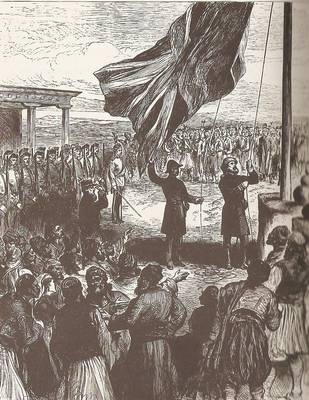 La poussée russe en direction de la Méditerranée orientale et l’ouverture du canal de Suez (1869) amenèrent la Grande-Bretagne à s’intéresser à la position stratégique de Chypre. Après avoir limité les ambitions de Moscou en soutenant l’Empire ottoman (congrès de Berlin, 1878), la Grande-Bretagne conclut une alliance défensive avec Istanbul, qui lui confia l’administration de Chypre (Conventions des 4 juin, 1er juillet et 1er août 1878). L’anglais supplanta alors le français comme langue des élites. Mais la modernisation ne fut pas à la hauteur des espérances. En effet, dès 1882, les Britanniques disposèrent du port d’Alexandrie pour sécuriser le trafic maritime de la route des Indes via le canal de Suez et surveiller tout mouvement éventuel de la flotte russe. Chypre perdait son importance stratégique et les investissements déclinèrent rapidement. Déçus, en 1889, les Chypriotes grecs demandèrent officiellement leur indépendance et leur rattachement à la Grèce. Londres leur opposa le premier d’une longue série de refus.
La poussée russe en direction de la Méditerranée orientale et l’ouverture du canal de Suez (1869) amenèrent la Grande-Bretagne à s’intéresser à la position stratégique de Chypre. Après avoir limité les ambitions de Moscou en soutenant l’Empire ottoman (congrès de Berlin, 1878), la Grande-Bretagne conclut une alliance défensive avec Istanbul, qui lui confia l’administration de Chypre (Conventions des 4 juin, 1er juillet et 1er août 1878). L’anglais supplanta alors le français comme langue des élites. Mais la modernisation ne fut pas à la hauteur des espérances. En effet, dès 1882, les Britanniques disposèrent du port d’Alexandrie pour sécuriser le trafic maritime de la route des Indes via le canal de Suez et surveiller tout mouvement éventuel de la flotte russe. Chypre perdait son importance stratégique et les investissements déclinèrent rapidement. Déçus, en 1889, les Chypriotes grecs demandèrent officiellement leur indépendance et leur rattachement à la Grèce. Londres leur opposa le premier d’une longue série de refus.
L’entrée en guerre de l’Empire ottoman aux côtés des Puissances centrales (Allemagne, Autriche-Hongrie) provoqua l’abrogation des Conventions de 1878 et l’annexion de Chypre par la Grande-Bretagne (5 novembre 1914). La présence de troupes alliées à Salonique et en Égypte réactiva l’importance stratégique de Chypre et offrit à l’économie de l’île d’importants débouchés. À la fin de la Première Guerre mondiale, les Chypriotes grecs renouvelèrent sans succès leur demande de rattachement à la Grèce, tandis que la Turquie renonçait “définitivement“ à Chypre (1920 : traité de Sèvres ; 1923 : traité de Lausanne). Or, les guerres gréco-turques de 1919-1920 et l’épuration ethnique croisée qui en résulta avaient accru les passions identitaires. La revendication d’enosis en fut exacerbée, tandis que Londres maintenait son intransigeance : en 1925, l’île devint officiellement colonie britannique. Le 21 octobre 1931, une manifestation en faveur de l’enosis tourna à l’émeute et le palais du gouverneur britannique fut incendié. Les troubles persistèrent jusqu’en 1939.
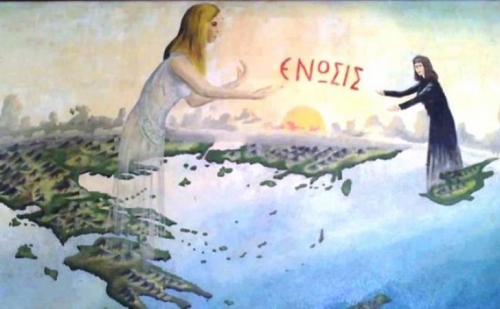
L’invasion de la Grèce par les puissances de l’Axe (28 octobre 1940 - 28 avril 1941) poussa des Chypriotes à s’engager dans l’armée britannique. Chypre redevint une base militaire essentielle après le débarquement de Rommel en Afrique du Nord, en février 1941, et la conquête de la Crète par les Allemands, en mai 1941. Londres autorisa une relative libéralisation de la vie politique sur l’île mais, en 1945, une nouvelle demande de rattachement à la Grèce fut rejetée. La Grande-Bretagne tenta de juguler le mécontentement par l’octroi d’un statut d’autonomie. Londres nourrissait de vives inquiétudes : alors que le contexte de Guerre froide avait entraîné une sanglante guerre civile en Grèce (1946-1949), le parti communiste chypriote (AKEL) avait connu un essor important depuis la Seconde Guerre mondiale. L’appréhension était partagée, comme en attesta la condamnation du communisme par l’archevêque de Nicosie. Mais ce dernier n’abandonnait pas pour autant la cause panhellénique. En janvier 1950, il organisa un référendum officieux sur l’enosis. 96 % des votants exprimèrent leur volonté de rattachement à la Grèce. Les autorités britanniques dénoncèrent l’illégalité de la consultation et refusèrent de la prendre en considération. Avec l’élection de Monseigneur Makarios III à sa tête, en octobre 1950, l’Église autocéphale chypriote intensifia le combat panhellénique. Le nouvel archevêque tenta de saisir l’ONU de la question de Chypre, mais la Grande-Bretagne s’y refusait et le gouvernement grec ne pouvait contrarier cette dernière car il en dépendait. Après l’évacuation de la zone du canal de Suez exigée en 1954 par le colonel Nasser, Londres eut un motif supplémentaire de conserver ce territoire : le quartier général britannique pour le Moyen-Orient devait y être transféré. Elle annonça un nouveau statut d’autonomie mais renouvela son refus d’aller au-delà. À l’automne 1954, la Grèce put enfin faire inscrire la question chypriote à l’ordre du jour de l’Assemblée générale des Nations unies. Les Britanniques, afin de dévier le problème sur le terrain de la rivalité gréco-turque et de se poser en arbitres, impliquèrent la Grèce et la Turquie dans les négociations. La manœuvre réussit à la perfection et aucune solution ne fut trouvée : alors que la première réclamait l’autodétermination, la seconde la refusa.
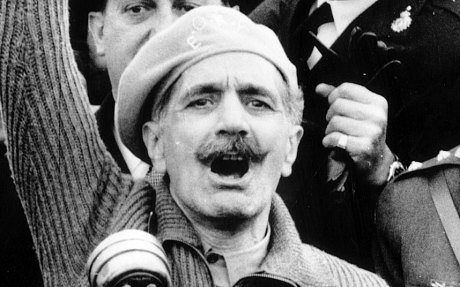 Georges Grivas, un général grec vétéran des deux guerres mondiales, créa, en 1954, l’Organisation nationale des combattants chypriotes (Ethniki Organosis Kyprion Agoniston-EOKA). Le 1er avril 1955, avec l’accord de Mgr Makarios, il déclencha la lutte armée pour l’indépendance et l’enosis. Convaincus que Mgr Makarios instrumentalisait l’EOKA, les Britanniques l’exilèrent aux Seychelles (9 mars 1956). Cela déclencha des protestations internationales et Grivas intensifia les opérations, ce qui aggrava la répression. La violence atteignit son paroxysme et le gouvernement britannique se résigna à l’autodétermination. L’intervention à Suez, en novembre 1956, démontra tout à la fois l’utilité d’une base stratégique en Méditerranée orientale et la nécessité d’être en bonne intelligence avec la population sur le territoire de laquelle elle était implantée. Les pourparlers reprirent au printemps 1957, après la libération de Mgr Makarios. Sous la pression américaine, la Grèce et Mgr Makarios renoncèrent à l’ enosis , tandis que les Turcs abandonnaient leur projet de partition. L’EOKA cessa ses opérations en 1959.
Georges Grivas, un général grec vétéran des deux guerres mondiales, créa, en 1954, l’Organisation nationale des combattants chypriotes (Ethniki Organosis Kyprion Agoniston-EOKA). Le 1er avril 1955, avec l’accord de Mgr Makarios, il déclencha la lutte armée pour l’indépendance et l’enosis. Convaincus que Mgr Makarios instrumentalisait l’EOKA, les Britanniques l’exilèrent aux Seychelles (9 mars 1956). Cela déclencha des protestations internationales et Grivas intensifia les opérations, ce qui aggrava la répression. La violence atteignit son paroxysme et le gouvernement britannique se résigna à l’autodétermination. L’intervention à Suez, en novembre 1956, démontra tout à la fois l’utilité d’une base stratégique en Méditerranée orientale et la nécessité d’être en bonne intelligence avec la population sur le territoire de laquelle elle était implantée. Les pourparlers reprirent au printemps 1957, après la libération de Mgr Makarios. Sous la pression américaine, la Grèce et Mgr Makarios renoncèrent à l’ enosis , tandis que les Turcs abandonnaient leur projet de partition. L’EOKA cessa ses opérations en 1959.
Le 16 août 1960, l’île devint indépendante, avec une Constitution prévoyant un partage du pouvoir entre Chypriotes grecs et Chypriotes turcs. Sur le terrain, les deux communautés restaient imbriquées et avaient vécu en bonne intelligence jusqu’aux clivages intercommunautaires qui apparurent en 1956 et produisirent les premiers incidents sanglants en 1958. Afin de se protéger des violences perpétrées par l’EOKA, des Chypriotes turcs, autour de Rauf Denktash, fondèrent alors l’Organisation turque de résistance (Türk Mukavemet Teskilati-TMT) et prônèrent la partition. La multiplication des divergences rendit l’île ingouvernable. En 1962, pour sortir de la paralysie, Mgr Makarios tenta de modifier la Constitution. Mais les Chypriotes turcs, craignant de voir leurs droits réduits, s’y refusèrent. Les affrontements entre les deux communautés s’exacerbèrent en 1963 (Noël sanglante) et dès 1964, l’île faisait l’objet d’une partition de fait : 100 000 Chypriotes turcs étaient regroupés dans 45 enclaves dispersées sur l’ensemble de l’île. S’ouvrit alors une décennie de crise, qui culmina le 15 juillet 1974 avec la tentative de coup d’État de la dictature militaire grecque (appuyée sur l’EOKA-B créée par Grivas en 1971 pour relancer l’enosis) contre Mgr Makarios. Les colonels essayaient d’enrayer la contestation populaire en Grèce par l’accomplissement de l’enosis. Cette manœuvre tourna à la confusion de ses auteurs : les Turcs débarquèrent dans le nord de l’île le 20 juillet 1974. À l’issue d’un mois de combats, auxquels participèrent activement les membres du TMT, Ankara contrôlait le tiers nord de l’île, ce qui provoqua un exode massif de populations (200 000 Chypriotes grecs chassés au sud ; 42 000 Chypriotes turcs chassés au nord) et la mise en place de deux entités politiques : la République de Chypre et la RTCN.
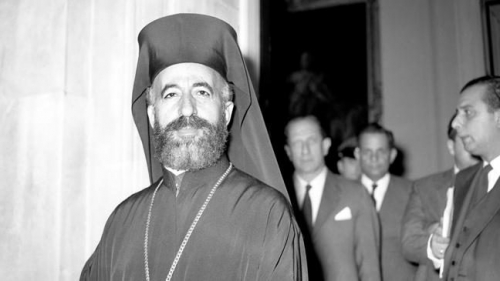
Les oppositions entre insulaires ne se réduisent pas au clivage entre Chypriotes grecs et Chypriotes turcs. Chaque communauté connaît de vifs débats internes illustrés par les récentes élections : législatives du 7 janvier 2018 dans la partie turque, présidentielles des 28 janvier et 4 février 2018 dans la partie grecque. Si la question de la réunification nourrit largement les débats, les problèmes socio-économiques prennent de plus en plus d’importance. Notamment dans la partie grecque, où le président sortant (Nicos Anastasiades) vient d’être réélu non seulement sur la promesse de reprendre les négociations, mais aussi sur l’engagement de relancer l’économie (et l’emploi) et de créer un fonds dédié au remboursement d’une partie de l’épargne saisie lors de la crise bancaire de 2013. Le débat n’est pas absent de la partie turque : parti historique de la communauté, fondé en 1975 par Rauf Denktash, le Parti de l’unité nationale (conservateur nationaliste) n’a pas atteint la majorité absolue, une partie des électeurs lui reprochant tout à la fois d’être corrompu, d’abuser du pouvoir (qu’il a exercé pendant plus de 30 ans depuis 1975) et d’être trop étroitement soumis à Ankara. Bien qu’émiettée, l’opposition est parvenue à créer une coalition réformatrice modérée majoritaire. L’opinion est également divisée sur la politique du président Erdogan : des Chypriotes turcs de souche rejettent l’implantation de colons venus de Turquie (ils seraient majoritaires en RTCN), critiquent l’intransigeance d’Ankara dans les négociations sur la réunification, s’opposent à l’islamisation (ouverture d’écoles religieuses, construction de mosquées) et à ce qu’ils considèrent comme une politique extérieure expansionniste.
En dépit de l’indépendance acquise en 1960, le sort des Chypriotes ne dépend pas des Chypriotes seuls.
III. Une île très convoitée
Peut-être instruit par une histoire et une actualité marquées par de multiples rivalités qui ensanglantèrent l’île, Mgr Makarios fut un adepte du non-alignement. Ce positionnement, qui indisposa les États-Unis, même s’il n’empêcha pas le maintien des bases militaires britanniques, prit fin en 2004 avec l’intégration au sein de l’Union européenne (comme pour Malte).
Marquée par la culture hellénique depuis l’Antiquité, Chypre entretient des relations anciennes et complexes avec la Grèce. Elle se trouva de ce fait influencée par la tentative de regroupement de toute les populations grecques par Athènes depuis le XIXe siècle. Elle demeure une composante du nationalisme grec. Elle est également concernée par la rivalité entre les Grecs et les Turcs, dont les tragiques péripéties ont donné, au fil des siècles, naissance à une tradition d’affrontement entre la Grèce et la Turquie. Depuis les années 1950, les États-Unis, soucieux de la sécurité du flanc sud de l’Alliance atlantique, tentent de tempérer cet antagonisme. La Grèce contrôle pratiquement toutes les îles de la mer Égée et du Dodécanèse. La possession de Chypre renforcerait sa capacité à bloquer l’ensemble des ports turcs de Méditerranée. Sans oublier que la présence éventuelle de gisements sous-marins d’hydrocarbures aiguise les appétits et les tensions. En proie à de graves difficultés internes, Athènes ne dispose pas des moyens d’une politique extérieure active, notamment vis-à-vis d’Ankara.
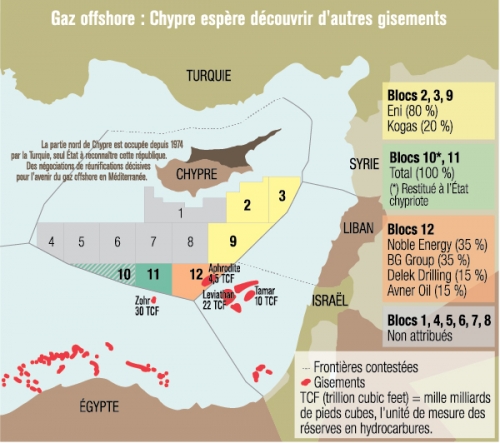
Incluse dans l’Empire ottoman pendant trois siècles, Chypre demeure liée à la Turquie. Celle-ci s’est notamment érigée en protectrice de la minorité chypriote turque, instrumentalisée lors de l’intervention militaire de l’été 1974. Depuis cette date, la Turquie maintient 40 000 soldats sur place (contrairement à la Grèce, qui n’en a aucun) et implante des colons venus d’Anatolie (environ 100 000, semble-t-il). Elle est le seul État à reconnaître officiellement la RTCN. Cette dernière lui sert de gage pour d’éventuelles négociations avec la Grèce et contribue à sécuriser ses ports sur la côte méditerranéenne. Ce dernier aspect gagne en importance avec la montée en puissance de la Turquie comme carrefour d’exportation des hydrocarbures entre la Russie, le Caucase, l’Asie centrale, l’Iran et l’Union européenne. La candidature à l’intégration dans cette dernière, incitait Ankara à une relative modération. Mais, depuis 2010, la Turquie prend ses distances vis-à-vis de l’Occident, s’engage dans une politique de puissance régionale assise sur son essor économique et les tensions remontent avec la République de Chypre, notamment au sujet de la zone économique exclusive maritime dans laquelle se trouvent les gisements gaziers. L’évolution du pays, sous la direction de M. Erdogan, vers un nationalisme plus marqué et appuyé sur l’islam, influe sur le destin de Chypre. D’une part, à l’image des Turcs, les habitants de la RTCN sont divisés au sujet de cette politique. D’autre part, le durcissement d’Ankara affaiblit les chances d’aboutir à une solution négociée, d’autant que la Turquie entre en période pré-électorale (élections législatives et présidentielles en novembre 2019), moment propice aux surenchères.
La Grande-Bretagne, puissance coloniale, domina Chypre de 1878 à 1959. Elle a conservé deux importantes implantations militaires avec accès à la mer : l’une près de Larnaca, à Dekhelia, l’autre à Akrotiri, où se trouve l’unique base de la Royal Air Force en Méditerranée. Celle-ci joue un rôle essentiel pour participer aux opérations dans la région : en Irak (2003-2008) et contre Daech (depuis 2014).
La fin de la Guerre froide n’a pas diminué l’intérêt stratégique du flanc sud de l’OTAN aux yeux des États-Unis, traditionnellement en retrait sur le dossier chypriote pour préserver l’unité de l’Alliance atlantique. Afin de garantir un environnement de sécurité en Méditerranée orientale, ils souhaitent une coopération entre Chypre, la Turquie, la Grèce et Israël. Le règlement de la question chypriote en constitue l’un des préalables. Mais Washington n’a pas réussi à instaurer le climat de confiance nécessaire à la résolution du différend. Les tensions croissantes avec la Turquie depuis le début des années 2010 ne laissent augurer aucun progrès et la Russie ne peut que chercher à les entretenir.
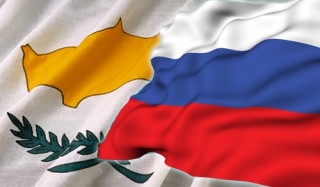 Depuis les années 1990, la présence russe s’accroît. Les nouveaux riches de l’ère post-soviétique apprécient la combinaison de la culture orthodoxe, d’une villégiature agréable, d’un environnement fiscal avantageux et de l’acquisition aisée de la nationalité grâce aux Golden Passports généreusement distribués depuis 2013 en échange du placement de leurs fortunes dans les banques locales. L’influente communauté juive d’origine russe installée en Israël entretient des relations d’affaires avec ces ex-compatriotes. Inévitablement, les facilités offertes n’ont pas échappé aux mafias russes. L’accession de Vladimir Poutine au pouvoir alors que les capacités de la Russie s’amélioraient a remis la politique de puissance à l’ordre du jour. Le retour au Proche-Orient s’intègre dans ce projet et la République de Chypre peut contribuer à sa réalisation. Signe du rapprochement entre les deux États, en 1997, la Russie a commencé à vendre des armes à Nicosie, notamment des missiles en vue de contrer une éventuelle intervention turque. Depuis 2013, Moscou bénéficie de facilités portuaires pour sa marine de guerre. Comme le renforcement de l’implantation de son armée en Syrie, elles appuient la réaffirmation de sa puissance. Mais la coopération entre Moscou et Ankara au Proche-Orient, si elle s’avérait durable, pourrait remettre en cause cette politique.
Depuis les années 1990, la présence russe s’accroît. Les nouveaux riches de l’ère post-soviétique apprécient la combinaison de la culture orthodoxe, d’une villégiature agréable, d’un environnement fiscal avantageux et de l’acquisition aisée de la nationalité grâce aux Golden Passports généreusement distribués depuis 2013 en échange du placement de leurs fortunes dans les banques locales. L’influente communauté juive d’origine russe installée en Israël entretient des relations d’affaires avec ces ex-compatriotes. Inévitablement, les facilités offertes n’ont pas échappé aux mafias russes. L’accession de Vladimir Poutine au pouvoir alors que les capacités de la Russie s’amélioraient a remis la politique de puissance à l’ordre du jour. Le retour au Proche-Orient s’intègre dans ce projet et la République de Chypre peut contribuer à sa réalisation. Signe du rapprochement entre les deux États, en 1997, la Russie a commencé à vendre des armes à Nicosie, notamment des missiles en vue de contrer une éventuelle intervention turque. Depuis 2013, Moscou bénéficie de facilités portuaires pour sa marine de guerre. Comme le renforcement de l’implantation de son armée en Syrie, elles appuient la réaffirmation de sa puissance. Mais la coopération entre Moscou et Ankara au Proche-Orient, si elle s’avérait durable, pourrait remettre en cause cette politique.
La Turquie refuse obstinément de retirer ses troupes et de renoncer à son droit d’intervention militaire à Chypre, alors que c’est l’une des principales exigences de la partie grecque.
L’ONU est impliquée directement à Chypre depuis 1964, date à laquelle le Conseil de sécurité décida de déployer une force d’interposition entre les communautés grecque et turque : l’United Nations Peacekeeping Force in Cyprus - Force des Nations Unies chargée du maintien de la paix à Chypre-UNFICYP (Résolution n° 186). Depuis 1974 elle sécurise la zone tampon établie entre le nord et le sud de l’île. 1 106 personnes y sont aujourd’hui déployées. À plusieurs reprises, mais en vain, le Conseil de sécurité a déclaré illégale la partition, notamment par ses résolutions n° 367 (1975) et n° 541 (1983). En 1998, le Programme des Nations Unies pour le développement-PNUD, en étroite collaboration avec l’UNFICYP, entama une série de démarches pour mettre en place des coopérations entre les populations des deux communautés. Le processus fut lent car la société civile était quasi inexistante de part et d’autre. Avec les assouplissements apportés en 2003 par la partie turque au franchissement de la zone tampon (aujourd’hui 7 points de passage), la situation a évolué : les initiatives se sont multipliées et les habitants s’organisent. Jusqu’à ce jour, en dépit de nombreuses tentatives, les efforts des Nations Unies pour favoriser la réunification ont échoué (plan Annan de 2004, négociations de Crans-Montana en 2017, par exemple). La Turquie refuse obstinément de retirer ses troupes et de renoncer à son droit d’intervention militaire à Chypre, alors que c’est l’une des principales exigences de la partie grecque. Pour tenter de débloquer la situation, plusieurs dizaines d’organisations ont fondé la plateforme bicommunautaire Unite Cyprus Now, qui multiplie les actions en faveur d’un État fédéral.
Contrairement à sa pratique habituelle consistant à ne pas accueillir en son sein de pays affectés par des contentieux internationaux, l’Union européenne a admis la République de Chypre en 2004. Outre la satisfaction d’une demande activement soutenue par la Grèce, il s’agissait d’une manœuvre diplomatique pour amener Ankara à assouplir sa position. La candidature de la Turquie semblait créer des conditions favorables pour une normalisation de la situation et la réunification de l’île. Le pari se solda par un échec, consacré par le virage de la diplomatie turque en 2010. L’embargo que la Turquie applique aux navires et aux marchandises originaires de/ou transitant par la République de Chypre constitue un handicap pour le commerce maritime de l’Union européenne. Il compromet également le partenariat euro-méditerranéen. Le gaz naturel découvert en 2011 au large des côtes chypriotes constitue un enjeu important pour l’Union européenne dans la perspective d’une diminution de sa dépendance vis-à-vis du gaz russe.
Le secteur bancaire chypriote, s’appuyant sur une législation particulièrement favorable en matière de fiscalité des entreprises, joue un rôle-clé dans l’affirmation de la République de Chypre comme un des principaux paradis fiscaux de la planète. Pour cela, elle est régulièrement placée sur la sellette par les ONG (OXFAM, notamment) et les enquêtes (parlementaires, journalistes d’investigation). Corollaire de ces “facilités“, dans les deux parties de l’île, le crime organisé transnational s’épanouit.
Conclusion. Une partition durable ?
La géopolitique de Chypre constitue un cas d’école. La dimension identitaire pèse particulièrement lourd sur le destin de l’île. Or, les tensions ou les conflits qui en résultent s’avèrent partout parmi les plus difficiles à résoudre et les plus aisés à manipuler, de l’intérieur comme de l’extérieur. En janvier 1977, Mgr Makarios, président de l’entité grecque et Rauf Denkash, président de l’entité turque, les chefs historiques des deux communautés, étaient parvenus à un accord de principe pour instaurer un État fédéral. Mais Mgr Makarios mourut en avril de la même année, sans avoir finalisé cet arrangement. Une occasion unique de régler le problème chypriote fut ainsi ratée. Aujourd’hui, la dynamique paraît plutôt se trouver au cœur de la société civile. Mais cette dernière saura-t-elle et pourra-t-elle surmonter les représentations géopolitiques concurrentes et triompher des rivalités de puissance ?
Copyright Février 2018-Gourdin/Diploweb.com

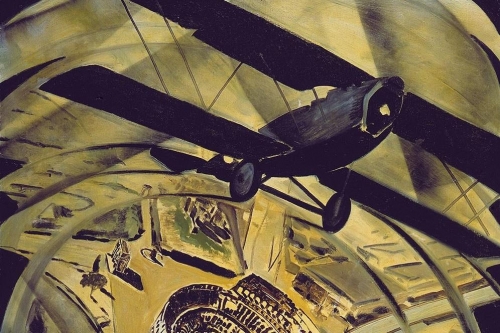
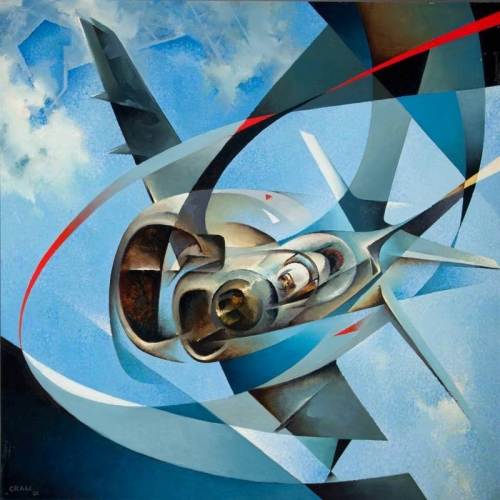
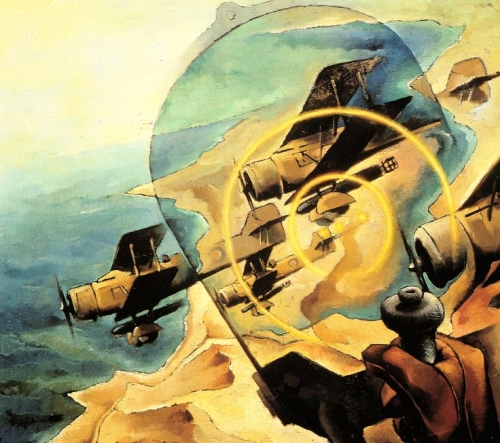

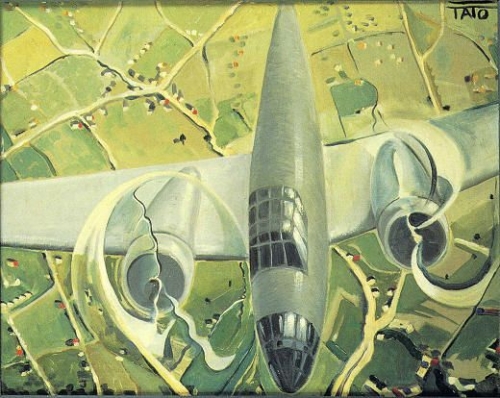



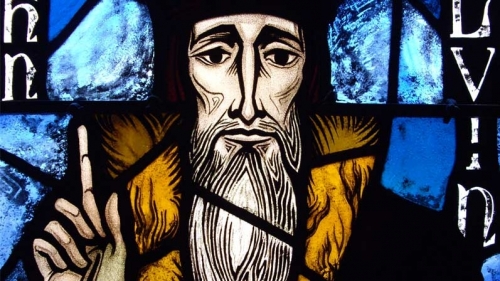
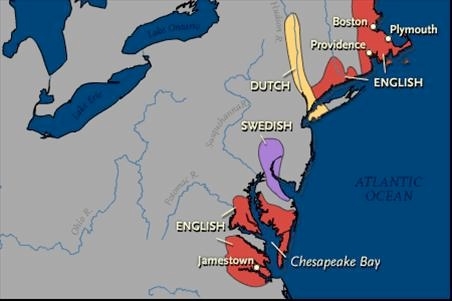
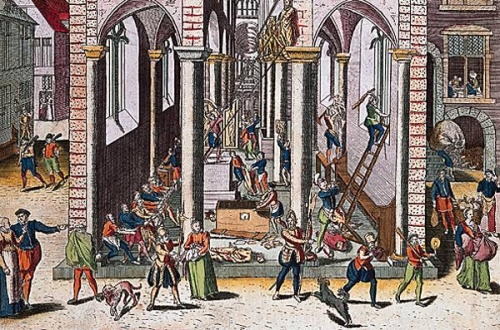
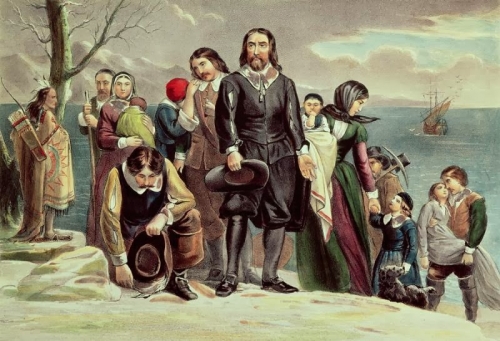

 del.icio.us
del.icio.us
 Digg
Digg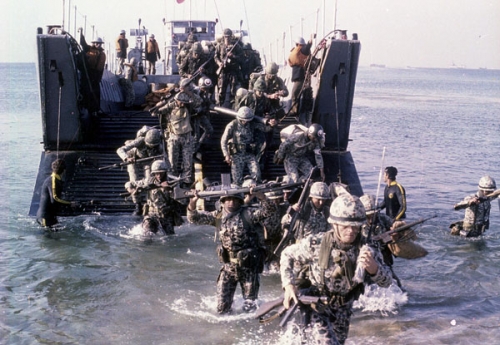


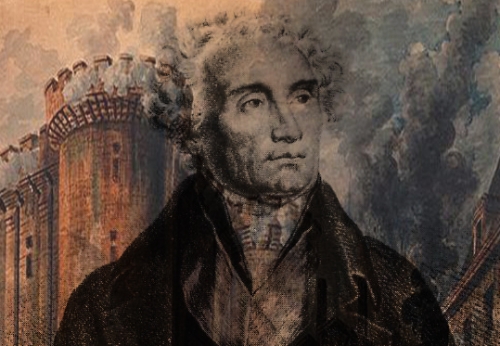
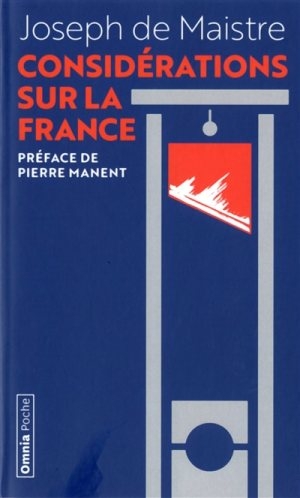 Pourtant, les Considérations sur la France sont bien autre chose, comme le souligne ce même Pierre Glaudes, qu'un simple pamphlet contre-révolutionnaire puisque ce texte «est aussi un essai de philosophie politique et une vaste méditation sur l'histoire, aux ambitions métaphysiques» assez évidentes, preuve que la grande et mystérieuse «illumination» (voir p. 185 de l'Introduction précédemment citée) qui au cours de l'été 1794 a modifié profondément la vision qu'avait Joseph de Maistre de la Révolution n'a pas été qu'une simple métaphore derrière laquelle, d'habitude, se cache un événement finalement banal mais qui aura pu être, pour l'intéressé, comme l'impureté autour de laquelle l'huître forme sa perle. Pierre Manent lui aussi est d'accord pour souligner l'importance du texte de Joseph de Maistre, dans lequel son célèbre providentialisme est mis à l'honneur, bien qu'il n'ait pas manqué d'opposants. Pourtant, comme Pierre Manent le remarque, «toute la pensée européenne, à la suite précisément et en conséquence de cette même révolution, allait devoir faire face à la même difficulté : si les événements ne sont pas intelligibles à partir des intentions et des actions des acteurs politiques placés dans des circonstances données, où est le principe d'intelligibilité ?» (p. 9).
Pourtant, les Considérations sur la France sont bien autre chose, comme le souligne ce même Pierre Glaudes, qu'un simple pamphlet contre-révolutionnaire puisque ce texte «est aussi un essai de philosophie politique et une vaste méditation sur l'histoire, aux ambitions métaphysiques» assez évidentes, preuve que la grande et mystérieuse «illumination» (voir p. 185 de l'Introduction précédemment citée) qui au cours de l'été 1794 a modifié profondément la vision qu'avait Joseph de Maistre de la Révolution n'a pas été qu'une simple métaphore derrière laquelle, d'habitude, se cache un événement finalement banal mais qui aura pu être, pour l'intéressé, comme l'impureté autour de laquelle l'huître forme sa perle. Pierre Manent lui aussi est d'accord pour souligner l'importance du texte de Joseph de Maistre, dans lequel son célèbre providentialisme est mis à l'honneur, bien qu'il n'ait pas manqué d'opposants. Pourtant, comme Pierre Manent le remarque, «toute la pensée européenne, à la suite précisément et en conséquence de cette même révolution, allait devoir faire face à la même difficulté : si les événements ne sont pas intelligibles à partir des intentions et des actions des acteurs politiques placés dans des circonstances données, où est le principe d'intelligibilité ?» (p. 9).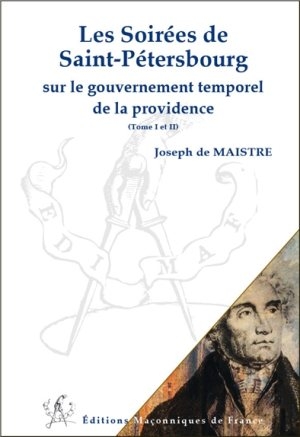 Le providentialisme de Joseph de Maistre ne saurait être séparé de la théorie d'une régénération de la France par l'épreuve et le sang. L'image suivante est saisissante à ce titre : «Chaque goutte du sang de Louis XVI en coûtera des torrents à la France; quatre millions de Français, peut-être, paieront de leurs têtes le grand crime national d'une insurrection anti-religieuse et anti-sociale, couronnée par un régicide» (p. 31). C'est la Providence, donc, qui punit. Certes, elle n'a pas besoin de punir «dans le temps pour justicier ses voies» mais, précise Joseph de Maistre, «à cette époque elle se met à notre portée, et punit comme un tribunal humain» (p. 33), étant donné que «tous les monstres que la révolution a enfantés n'ont travaillé, suivant les apparences, que pour la royauté» (p. 36).
Le providentialisme de Joseph de Maistre ne saurait être séparé de la théorie d'une régénération de la France par l'épreuve et le sang. L'image suivante est saisissante à ce titre : «Chaque goutte du sang de Louis XVI en coûtera des torrents à la France; quatre millions de Français, peut-être, paieront de leurs têtes le grand crime national d'une insurrection anti-religieuse et anti-sociale, couronnée par un régicide» (p. 31). C'est la Providence, donc, qui punit. Certes, elle n'a pas besoin de punir «dans le temps pour justicier ses voies» mais, précise Joseph de Maistre, «à cette époque elle se met à notre portée, et punit comme un tribunal humain» (p. 33), étant donné que «tous les monstres que la révolution a enfantés n'ont travaillé, suivant les apparences, que pour la royauté» (p. 36). Dès lors, le châtiment doit être exemplaire, l’Église et le Roi mais aussi les croyants, eux, doivent être humiliés, tamisés et même, nous l'avons dit, émondés, avant que la contre-révolution qui, nous le savons aussi, est tout ce que l'on voudra, et d'abord le «Contraire de la Révolution», mais n'est en aucun cas une «révolution contraire» (p. 157), puisse apporter son baume sur les plaies ouvertes de la France et redonner, là encore paradoxalement, toute leur place aux hommes, qui ont été balayés par un esprit d'abstraction devenu fou (4).
Dès lors, le châtiment doit être exemplaire, l’Église et le Roi mais aussi les croyants, eux, doivent être humiliés, tamisés et même, nous l'avons dit, émondés, avant que la contre-révolution qui, nous le savons aussi, est tout ce que l'on voudra, et d'abord le «Contraire de la Révolution», mais n'est en aucun cas une «révolution contraire» (p. 157), puisse apporter son baume sur les plaies ouvertes de la France et redonner, là encore paradoxalement, toute leur place aux hommes, qui ont été balayés par un esprit d'abstraction devenu fou (4).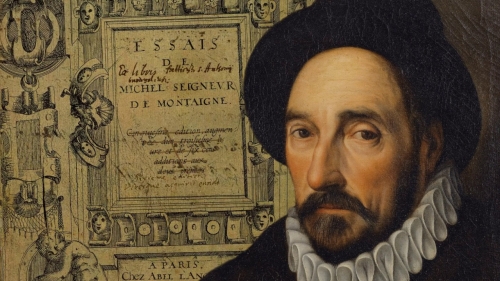
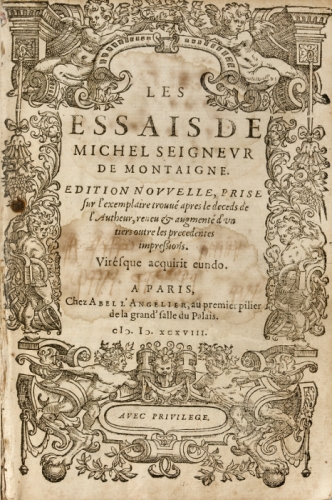 « Tout le monde redoute d’être contrôlé et épié ; les grands le sont jusque dans leurs comportements et leurs pensées, le peuple estimant avoir le droit d’en juger et intérêt à le faire. »
« Tout le monde redoute d’être contrôlé et épié ; les grands le sont jusque dans leurs comportements et leurs pensées, le peuple estimant avoir le droit d’en juger et intérêt à le faire. »






 La poussée russe en direction de la Méditerranée orientale et l’ouverture du canal de Suez (1869) amenèrent la Grande-Bretagne à s’intéresser à la position stratégique de Chypre. Après avoir limité les ambitions de Moscou en soutenant l’Empire ottoman (congrès de Berlin, 1878), la Grande-Bretagne conclut une alliance défensive avec Istanbul, qui lui confia l’administration de Chypre (Conventions des 4 juin, 1er juillet et 1er août 1878). L’anglais supplanta alors le français comme langue des élites. Mais la modernisation ne fut pas à la hauteur des espérances. En effet, dès 1882, les Britanniques disposèrent du port d’Alexandrie pour sécuriser le trafic maritime de la route des Indes via le canal de Suez et surveiller tout mouvement éventuel de la flotte russe. Chypre perdait son importance stratégique et les investissements déclinèrent rapidement. Déçus, en 1889, les Chypriotes grecs demandèrent officiellement leur indépendance et leur rattachement à la Grèce. Londres leur opposa le premier d’une longue série de refus.
La poussée russe en direction de la Méditerranée orientale et l’ouverture du canal de Suez (1869) amenèrent la Grande-Bretagne à s’intéresser à la position stratégique de Chypre. Après avoir limité les ambitions de Moscou en soutenant l’Empire ottoman (congrès de Berlin, 1878), la Grande-Bretagne conclut une alliance défensive avec Istanbul, qui lui confia l’administration de Chypre (Conventions des 4 juin, 1er juillet et 1er août 1878). L’anglais supplanta alors le français comme langue des élites. Mais la modernisation ne fut pas à la hauteur des espérances. En effet, dès 1882, les Britanniques disposèrent du port d’Alexandrie pour sécuriser le trafic maritime de la route des Indes via le canal de Suez et surveiller tout mouvement éventuel de la flotte russe. Chypre perdait son importance stratégique et les investissements déclinèrent rapidement. Déçus, en 1889, les Chypriotes grecs demandèrent officiellement leur indépendance et leur rattachement à la Grèce. Londres leur opposa le premier d’une longue série de refus.
 Georges Grivas, un général grec vétéran des deux guerres mondiales, créa, en 1954, l’Organisation nationale des combattants chypriotes (Ethniki Organosis Kyprion Agoniston-EOKA). Le 1er avril 1955, avec l’accord de Mgr Makarios, il déclencha la lutte armée pour l’indépendance et l’enosis. Convaincus que Mgr Makarios instrumentalisait l’EOKA, les Britanniques l’exilèrent aux Seychelles (9 mars 1956). Cela déclencha des protestations internationales et Grivas intensifia les opérations, ce qui aggrava la répression. La violence atteignit son paroxysme et le gouvernement britannique se résigna à l’autodétermination. L’intervention à Suez, en novembre 1956, démontra tout à la fois l’utilité d’une base stratégique en Méditerranée orientale et la nécessité d’être en bonne intelligence avec la population sur le territoire de laquelle elle était implantée. Les pourparlers reprirent au printemps 1957, après la libération de Mgr Makarios. Sous la pression américaine, la Grèce et Mgr Makarios renoncèrent à l’ enosis , tandis que les Turcs abandonnaient leur projet de partition. L’EOKA cessa ses opérations en 1959.
Georges Grivas, un général grec vétéran des deux guerres mondiales, créa, en 1954, l’Organisation nationale des combattants chypriotes (Ethniki Organosis Kyprion Agoniston-EOKA). Le 1er avril 1955, avec l’accord de Mgr Makarios, il déclencha la lutte armée pour l’indépendance et l’enosis. Convaincus que Mgr Makarios instrumentalisait l’EOKA, les Britanniques l’exilèrent aux Seychelles (9 mars 1956). Cela déclencha des protestations internationales et Grivas intensifia les opérations, ce qui aggrava la répression. La violence atteignit son paroxysme et le gouvernement britannique se résigna à l’autodétermination. L’intervention à Suez, en novembre 1956, démontra tout à la fois l’utilité d’une base stratégique en Méditerranée orientale et la nécessité d’être en bonne intelligence avec la population sur le territoire de laquelle elle était implantée. Les pourparlers reprirent au printemps 1957, après la libération de Mgr Makarios. Sous la pression américaine, la Grèce et Mgr Makarios renoncèrent à l’ enosis , tandis que les Turcs abandonnaient leur projet de partition. L’EOKA cessa ses opérations en 1959.

 Depuis les années 1990, la présence russe s’accroît. Les nouveaux riches de l’ère post-soviétique apprécient la combinaison de la culture orthodoxe, d’une villégiature agréable, d’un environnement fiscal avantageux et de l’acquisition aisée de la nationalité grâce aux Golden Passports généreusement distribués depuis 2013 en échange du placement de leurs fortunes dans les banques locales. L’influente communauté juive d’origine russe installée en Israël entretient des relations d’affaires avec ces ex-compatriotes. Inévitablement, les facilités offertes n’ont pas échappé aux mafias russes. L’accession de Vladimir Poutine au pouvoir alors que les capacités de la Russie s’amélioraient a remis la politique de puissance à l’ordre du jour. Le retour au Proche-Orient s’intègre dans ce projet et la République de Chypre peut contribuer à sa réalisation. Signe du rapprochement entre les deux États, en 1997, la Russie a commencé à vendre des armes à Nicosie, notamment des missiles en vue de contrer une éventuelle intervention turque. Depuis 2013, Moscou bénéficie de facilités portuaires pour sa marine de guerre. Comme le renforcement de l’implantation de son armée en Syrie, elles appuient la réaffirmation de sa puissance. Mais la coopération entre Moscou et Ankara au Proche-Orient, si elle s’avérait durable, pourrait remettre en cause cette politique.
Depuis les années 1990, la présence russe s’accroît. Les nouveaux riches de l’ère post-soviétique apprécient la combinaison de la culture orthodoxe, d’une villégiature agréable, d’un environnement fiscal avantageux et de l’acquisition aisée de la nationalité grâce aux Golden Passports généreusement distribués depuis 2013 en échange du placement de leurs fortunes dans les banques locales. L’influente communauté juive d’origine russe installée en Israël entretient des relations d’affaires avec ces ex-compatriotes. Inévitablement, les facilités offertes n’ont pas échappé aux mafias russes. L’accession de Vladimir Poutine au pouvoir alors que les capacités de la Russie s’amélioraient a remis la politique de puissance à l’ordre du jour. Le retour au Proche-Orient s’intègre dans ce projet et la République de Chypre peut contribuer à sa réalisation. Signe du rapprochement entre les deux États, en 1997, la Russie a commencé à vendre des armes à Nicosie, notamment des missiles en vue de contrer une éventuelle intervention turque. Depuis 2013, Moscou bénéficie de facilités portuaires pour sa marine de guerre. Comme le renforcement de l’implantation de son armée en Syrie, elles appuient la réaffirmation de sa puissance. Mais la coopération entre Moscou et Ankara au Proche-Orient, si elle s’avérait durable, pourrait remettre en cause cette politique.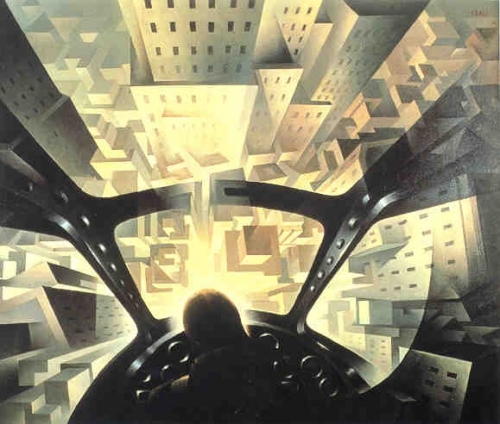
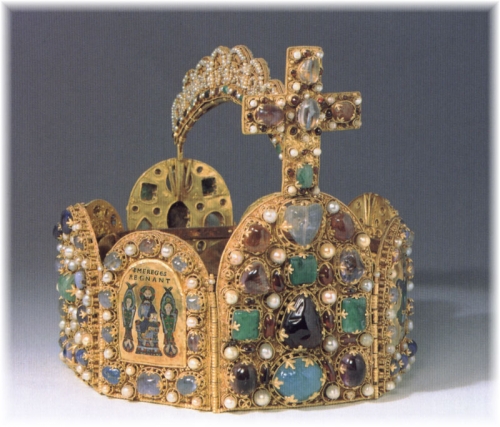

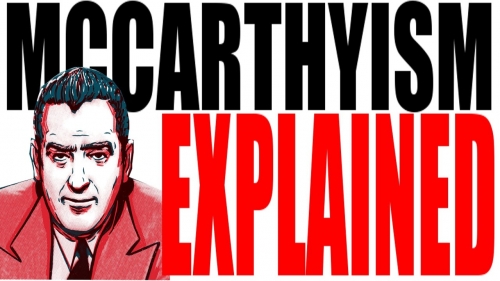
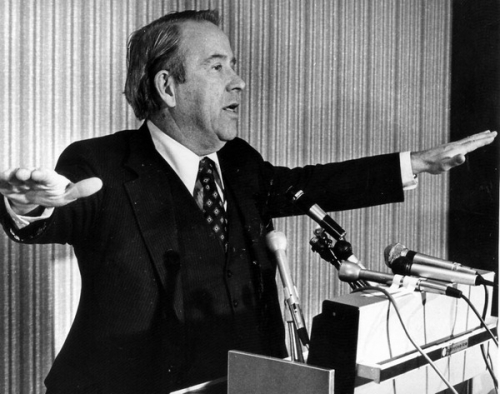
 » La HUAC avait été mise en place à la Chambre des Représentants en 1934
» La HUAC avait été mise en place à la Chambre des Représentants en 1934 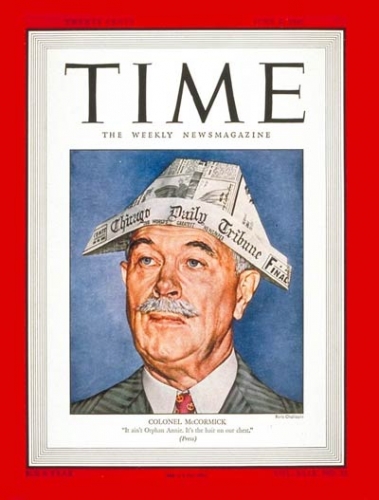 » Ce n'était que la plus visible des mesures répressives qui furent prises lors de la “Brown Scare” et qui furent ensuite réutilisées lors de la “Red Scare”. Il s’agissait d’un simple ajustement suivant le tournant de la politique étrangère américaine et un changement ultérieur de l'opinion publique américaine. Le FBI avait infiltré des groupes comme le Comité America First qui s'opposait à l'entrée des Etats-Unis dans la Seconde Guerre mondiale, il avait mis sur écoutes des dirigeants conservateurs tel que le directeur du Chicago Tribune Robert McCormick ; il suffisait alors de réorienter toutes ces procédures vers les cibles de gauche. Mais rappelez-vous l’essentiel : c’est la gauche qui lança tout cela et fit mettre en place la répression dans toute son ampleur, alors qu’elle tenait le fouet.
» Ce n'était que la plus visible des mesures répressives qui furent prises lors de la “Brown Scare” et qui furent ensuite réutilisées lors de la “Red Scare”. Il s’agissait d’un simple ajustement suivant le tournant de la politique étrangère américaine et un changement ultérieur de l'opinion publique américaine. Le FBI avait infiltré des groupes comme le Comité America First qui s'opposait à l'entrée des Etats-Unis dans la Seconde Guerre mondiale, il avait mis sur écoutes des dirigeants conservateurs tel que le directeur du Chicago Tribune Robert McCormick ; il suffisait alors de réorienter toutes ces procédures vers les cibles de gauche. Mais rappelez-vous l’essentiel : c’est la gauche qui lança tout cela et fit mettre en place la répression dans toute son ampleur, alors qu’elle tenait le fouet. (D’un autre côté, Roosevelt, qui était d’abord un politicien roué assez éloigné de l’image idéalisée qu’on en fit et qui persiste, s’opposait aux tentatives légales d’avancement trop affirmé de la gauche radicale, comme par exemple lorsqu’il sabota indirectement la campagne de l’écrivain
(D’un autre côté, Roosevelt, qui était d’abord un politicien roué assez éloigné de l’image idéalisée qu’on en fit et qui persiste, s’opposait aux tentatives légales d’avancement trop affirmé de la gauche radicale, comme par exemple lorsqu’il sabota indirectement la campagne de l’écrivain 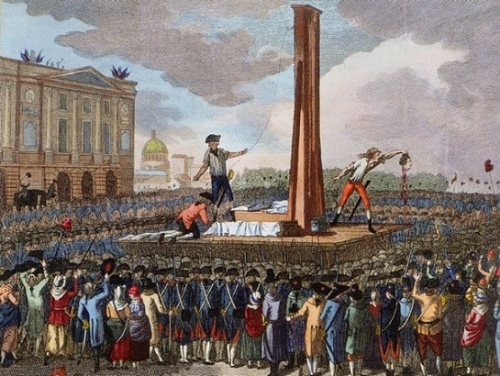
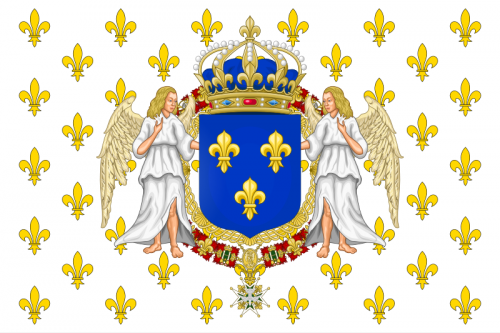

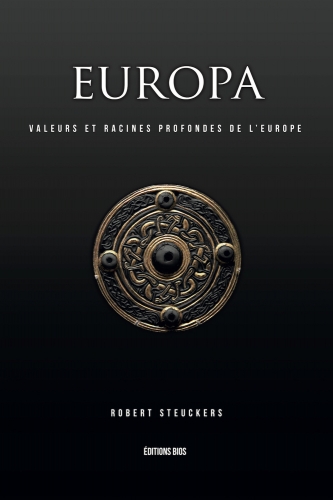

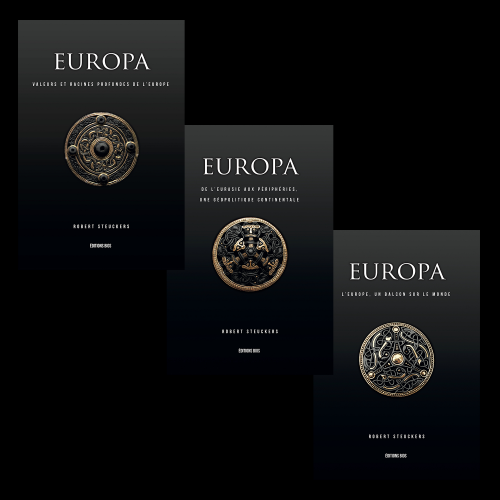

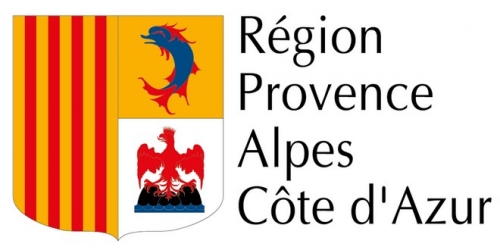
 Nous publions régulièrement dans nos colonnes des
Nous publions régulièrement dans nos colonnes des  Les mondialistes n’avoueraient pour rien au monde qu’ils nous préparent un avenir transhumaniste, c’est-à-dire la robotisation intégrale de la condition humaine, de l’Homme, pour être clair. La procédure exige qu’avant d’arriver à cette étape ultime, il convient de gommer soigneusement tous les éléments de la vie courante qui feraient référence à ces coutumes honnies et largement dépassées qui font référence à l’Histoire, aux traditions, au bon sens, aux vertus, au sentiment patriotique, ou, pire encore, à l’attachement à un sol, ce qui dénoterait un esprit obtus, poussiéreux et rédhibitoirement indécrottable, qui plus est farouchement hostile aux lendemains radieusement métalliques que l’Ordre mondial condescend à nous préparer.
Les mondialistes n’avoueraient pour rien au monde qu’ils nous préparent un avenir transhumaniste, c’est-à-dire la robotisation intégrale de la condition humaine, de l’Homme, pour être clair. La procédure exige qu’avant d’arriver à cette étape ultime, il convient de gommer soigneusement tous les éléments de la vie courante qui feraient référence à ces coutumes honnies et largement dépassées qui font référence à l’Histoire, aux traditions, au bon sens, aux vertus, au sentiment patriotique, ou, pire encore, à l’attachement à un sol, ce qui dénoterait un esprit obtus, poussiéreux et rédhibitoirement indécrottable, qui plus est farouchement hostile aux lendemains radieusement métalliques que l’Ordre mondial condescend à nous préparer. Muselier aurait pu aussi appeler la PACA « Bas de France » pour faire pendant aux « Hauts de France », ou, pour faire plus simple et en concertation avec les autres régions françaises, donner des numéros : zone 1 (pour Paris, évidemment) puis zone 2, 3, etc. Muselier, tel un capitaine de navire tenant fermement la barre, nous explique que « le Sud, c’est le soleil, la mer, la montagne et le bien-vivre » (tiens, ça me rappelle une autre chanson : il y a le ciel, le soleil et la mer…). Le navire en question, c’est certainement l’une de ces usines à touristes flottantes qui accostent à Marseille et dont les passagers en descendent pour visiter… Aix-en-Provence.
Muselier aurait pu aussi appeler la PACA « Bas de France » pour faire pendant aux « Hauts de France », ou, pour faire plus simple et en concertation avec les autres régions françaises, donner des numéros : zone 1 (pour Paris, évidemment) puis zone 2, 3, etc. Muselier, tel un capitaine de navire tenant fermement la barre, nous explique que « le Sud, c’est le soleil, la mer, la montagne et le bien-vivre » (tiens, ça me rappelle une autre chanson : il y a le ciel, le soleil et la mer…). Le navire en question, c’est certainement l’une de ces usines à touristes flottantes qui accostent à Marseille et dont les passagers en descendent pour visiter… Aix-en-Provence.
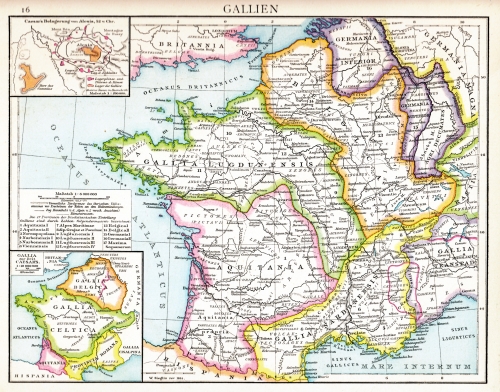
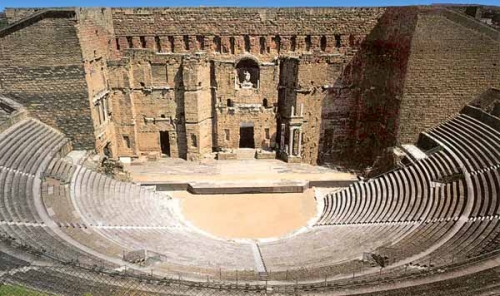
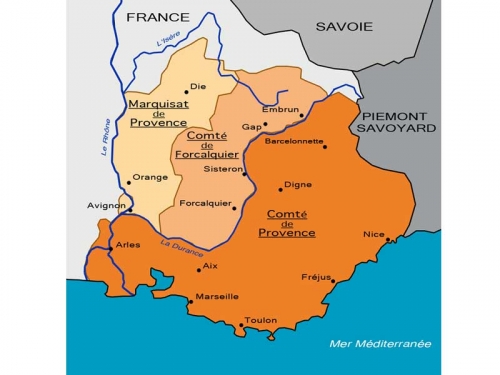
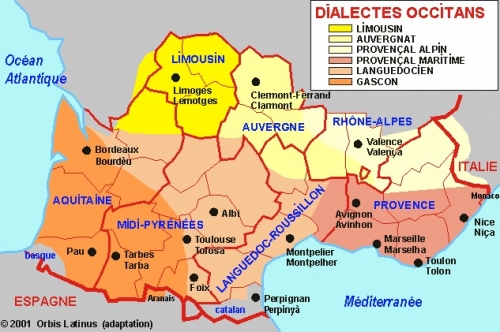
 Les identités les plus affirmées encore actuellement dans notre région constituent ces nombreux « pays » qui se sont regroupés au sein d’une entité plus importante formée par la grande Provence (qui inclut les « Bas-Alpins » comme les appelait Giono, mais qu’on dénommera plus volontiers les Alpes provençales) et par les Niçois, le Pays de Nice étant un pays ligure à l’origine. Aussi, j’aurais proposé initialement de choisir entre ces deux appellations : Grande Provence et Provence-Ligurie mais nous devons tenir compte du fait que l’ancien comté de Nice, même s’il est constitué essentiellement par la seconde ville de la région en termes d’habitants, ne représente qu’un tout petit territoire sur le plan géographique et que cette particularité pourrait entraîner légitimement la revendication d’autres « pays » tout aussi modestes en superficie qui aimeraient voir aussi leur nom accolé au principal pour diverses raisons, touristiques ou historiques (la Camargue, ou le Comtat venaissin, par exemple), principal qui ne peut être que Provence et nous retomberions dans l’inévitable acronyme pour faire vite, à l’image de notre temps, ce dont nous voulons justement nous débarrasser. D’autre part, cela créerait une confusion avec la province italienne voisine éponyme et engendrerait des problèmes d’ordre concret, notamment administratifs, voire diplomatiques. Je m’en tiens donc à « Grande Provence » pour éviter toute discrimination ou ambiguité.
Les identités les plus affirmées encore actuellement dans notre région constituent ces nombreux « pays » qui se sont regroupés au sein d’une entité plus importante formée par la grande Provence (qui inclut les « Bas-Alpins » comme les appelait Giono, mais qu’on dénommera plus volontiers les Alpes provençales) et par les Niçois, le Pays de Nice étant un pays ligure à l’origine. Aussi, j’aurais proposé initialement de choisir entre ces deux appellations : Grande Provence et Provence-Ligurie mais nous devons tenir compte du fait que l’ancien comté de Nice, même s’il est constitué essentiellement par la seconde ville de la région en termes d’habitants, ne représente qu’un tout petit territoire sur le plan géographique et que cette particularité pourrait entraîner légitimement la revendication d’autres « pays » tout aussi modestes en superficie qui aimeraient voir aussi leur nom accolé au principal pour diverses raisons, touristiques ou historiques (la Camargue, ou le Comtat venaissin, par exemple), principal qui ne peut être que Provence et nous retomberions dans l’inévitable acronyme pour faire vite, à l’image de notre temps, ce dont nous voulons justement nous débarrasser. D’autre part, cela créerait une confusion avec la province italienne voisine éponyme et engendrerait des problèmes d’ordre concret, notamment administratifs, voire diplomatiques. Je m’en tiens donc à « Grande Provence » pour éviter toute discrimination ou ambiguité.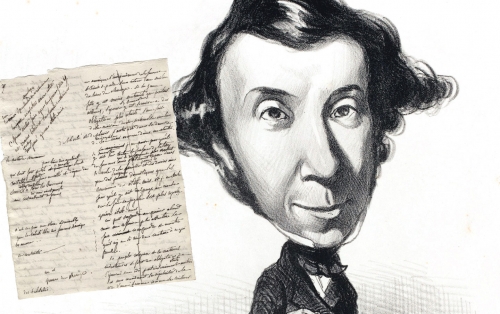
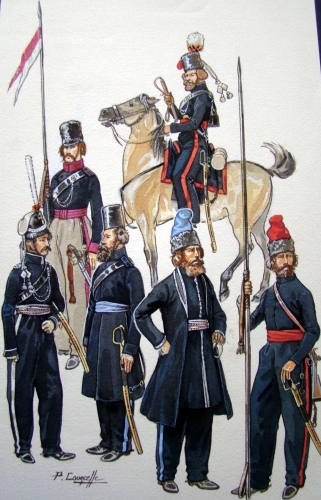 Tocqueville décrit cette préparation à la grande guerre européenne (et je crois que mon ami
Tocqueville décrit cette préparation à la grande guerre européenne (et je crois que mon ami 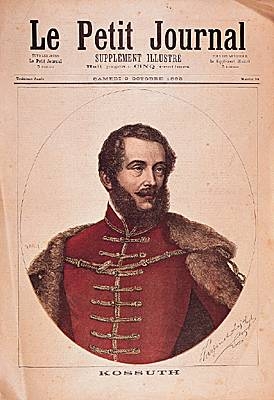 Puis Tocqueville met les pieds dans le plat sans mâcher ses mots cette fois :
Puis Tocqueville met les pieds dans le plat sans mâcher ses mots cette fois : Comme notre Poutine, le tzar Nicolas garde son sang-froid :
Comme notre Poutine, le tzar Nicolas garde son sang-froid :




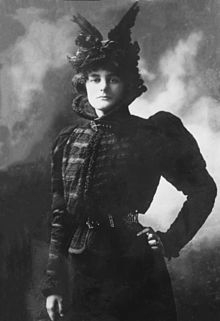 At an early age Yeats became involved in mysticism which would prove controversial his whole life. Kodani explains, “The early poetry of William Butler Yeats was very much bound up with the forces and interests of his early years. Many of these influences — such as that of Maud Gonne, his father, and his own mystic studies — have been elucidated by some careful scholarship.” Yeats’ writing was influenced by his study of mysticism. He joined the Theosophical Society as his immediate family’s tradition was not very religious. Later he “became interested in esoteric philosophy, and in 1890 was initiated into the Hermetic Order of the Golden Dawn” (Seymour-Smith). He would pursue mystical philosophy the rest of his life to a greater or lesser degree.
At an early age Yeats became involved in mysticism which would prove controversial his whole life. Kodani explains, “The early poetry of William Butler Yeats was very much bound up with the forces and interests of his early years. Many of these influences — such as that of Maud Gonne, his father, and his own mystic studies — have been elucidated by some careful scholarship.” Yeats’ writing was influenced by his study of mysticism. He joined the Theosophical Society as his immediate family’s tradition was not very religious. Later he “became interested in esoteric philosophy, and in 1890 was initiated into the Hermetic Order of the Golden Dawn” (Seymour-Smith). He would pursue mystical philosophy the rest of his life to a greater or lesser degree.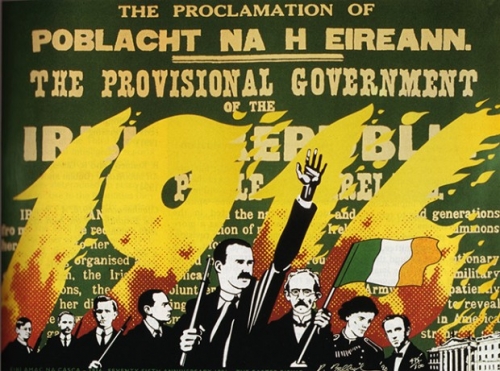
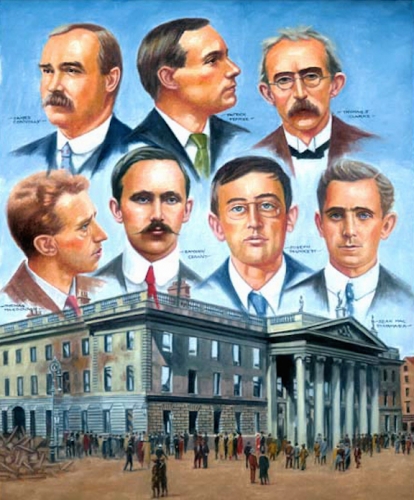
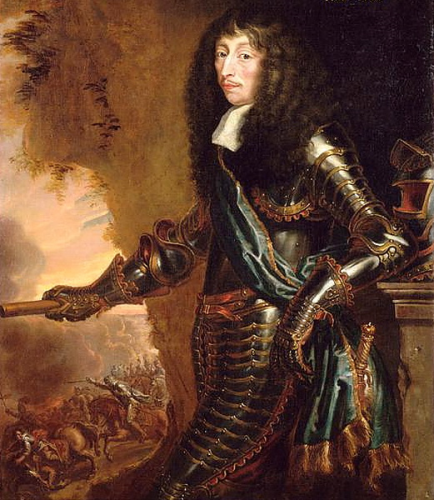
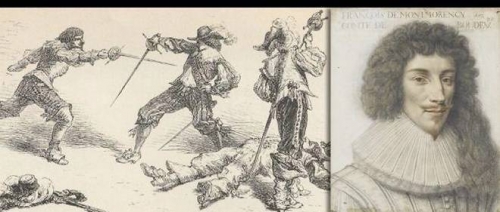
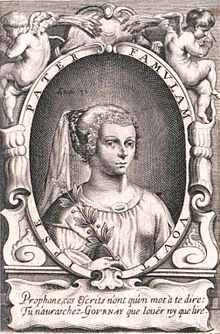 La révolte poétique sera l’expression d’un refus de cette expression culturelle de la Raison d’Etat. Les champions en seront, dans le domaine théâtral, Hardy, le grand Corneille lui-même, avant qu’il ne se convertisse aux règles, et en poésie, Régnier, anti-conformiste, individualiste original, Théophile de Viau, libertin converti, qui, bien que « moderniste », avait toujours sous sa plume le mot de « franchise », mort à 36 ans après avoir été mis au cachot par les cagots, Boisrobert, sévère pour un siècle voué à l’argent, Saint-Amant, La Ménardière, qui célébra « le grand Ronsard », le concettiste Tristan… Tous ces écrivains sont des êtres de plein air, des amants de la liberté, de la libre expression de soi, sans laquelle il n’est pas de noblesse. Même Sorel, le satirique qui ne l’aimait pas, louait « l’âme véritablement généreuse ». (1) Et il n’est pas d’auteur exprimant mieux cette aspiration qu’Honoré d’Urfé, qui a donné à la France l’exquis roman pastoral L’Astrée, qu’il situe dans le Forez, au milieu des bergers et des druides. Rien de plus étranger à l’ancien ligueur catholique que la médiocrité. Il prône une éthique platonicienne, fondée sur l’amour, le sublime, l’enthousiasme, la générosité, tous mouvements de l’âme et du cœur qui portent le fini vers Dieu. Honoré d’Urfé, c’est l’anti-Descartes, le négateur de l’esprit géométrique. Racan le suivra dans ses Bergeries, célébrant l’âge d’or. Mais l’Astrée est une utopie dans un siècle qui s’adonne à l’intérêt, à l’utilité, à l’ambition calculée, à la ruse, à la mathématique appliquée.
La révolte poétique sera l’expression d’un refus de cette expression culturelle de la Raison d’Etat. Les champions en seront, dans le domaine théâtral, Hardy, le grand Corneille lui-même, avant qu’il ne se convertisse aux règles, et en poésie, Régnier, anti-conformiste, individualiste original, Théophile de Viau, libertin converti, qui, bien que « moderniste », avait toujours sous sa plume le mot de « franchise », mort à 36 ans après avoir été mis au cachot par les cagots, Boisrobert, sévère pour un siècle voué à l’argent, Saint-Amant, La Ménardière, qui célébra « le grand Ronsard », le concettiste Tristan… Tous ces écrivains sont des êtres de plein air, des amants de la liberté, de la libre expression de soi, sans laquelle il n’est pas de noblesse. Même Sorel, le satirique qui ne l’aimait pas, louait « l’âme véritablement généreuse ». (1) Et il n’est pas d’auteur exprimant mieux cette aspiration qu’Honoré d’Urfé, qui a donné à la France l’exquis roman pastoral L’Astrée, qu’il situe dans le Forez, au milieu des bergers et des druides. Rien de plus étranger à l’ancien ligueur catholique que la médiocrité. Il prône une éthique platonicienne, fondée sur l’amour, le sublime, l’enthousiasme, la générosité, tous mouvements de l’âme et du cœur qui portent le fini vers Dieu. Honoré d’Urfé, c’est l’anti-Descartes, le négateur de l’esprit géométrique. Racan le suivra dans ses Bergeries, célébrant l’âge d’or. Mais l’Astrée est une utopie dans un siècle qui s’adonne à l’intérêt, à l’utilité, à l’ambition calculée, à la ruse, à la mathématique appliquée. 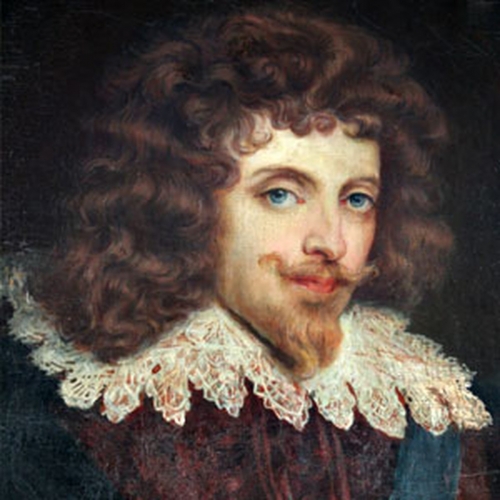
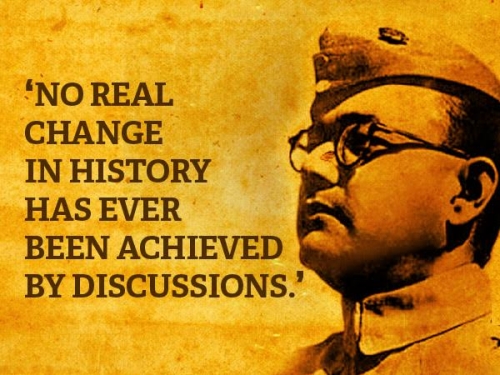
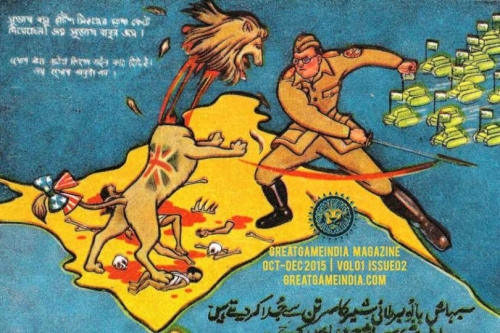


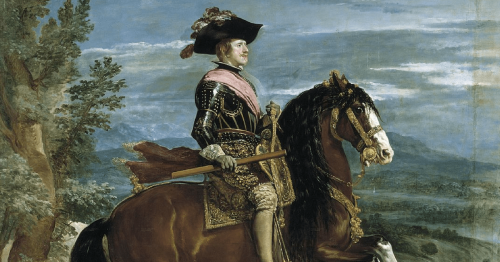
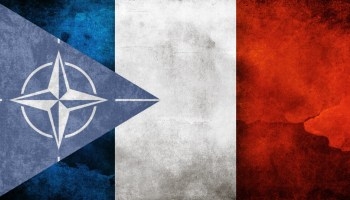
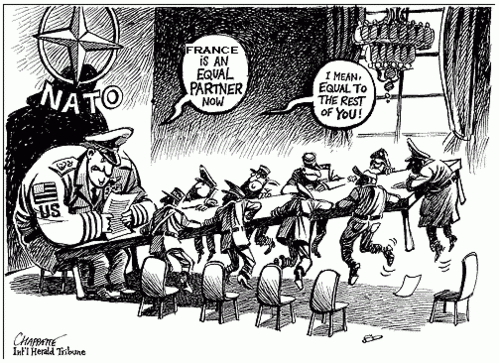
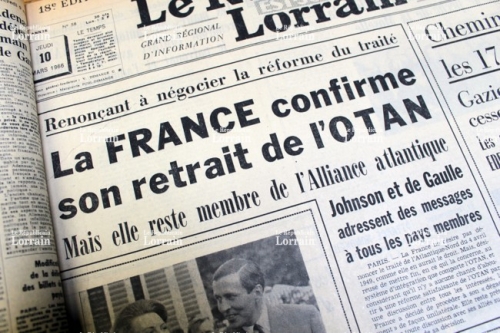
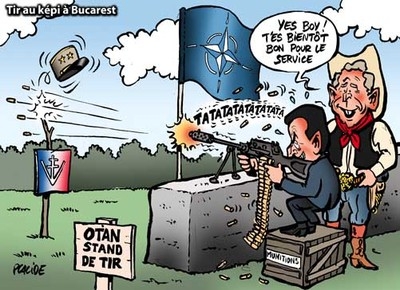
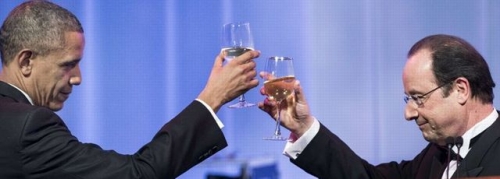
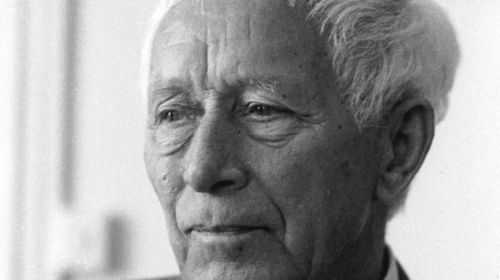
 Ernst Jünger appartient incontestablement à ces lettrés allemands qui s’enracinent dans l’âme germanique afin de mieux la dépasser et ainsi accéder au psyché européen. C’est ce qu’avait compris Dominique Venner dans son Ernst Jünger. Un autre destin européen (Éditions du Rocher, coll. « Biographie », 2009). Venner oublie néanmoins d’évoquer la sortie en 1962 de L’État universel dans lequel Jünger ne cache pas ses intentions mondialistes. « Un mouvement d’importance mondiale, y écrit-il, est, de toute évidence, en quête d’un centre. […] Il s’efforce d’évoluer des États mondiaux à l’État universel, à l’ordonnance terrestre ou globale (L’État universel suivi de La mobilisation totale, Gallimard, coll. « Tel », 1990, p. 40). » Pour Jünger, la saturation maximale de la Technique et l’assomption du Travailleur aboutissent à l’État universel. Pourtant, l’intrigue du roman de 1977, Eumeswil, se déroule dans une ère post-historique survenue après l’effondrement de l’État universel et la renaissance des cités-États.
Ernst Jünger appartient incontestablement à ces lettrés allemands qui s’enracinent dans l’âme germanique afin de mieux la dépasser et ainsi accéder au psyché européen. C’est ce qu’avait compris Dominique Venner dans son Ernst Jünger. Un autre destin européen (Éditions du Rocher, coll. « Biographie », 2009). Venner oublie néanmoins d’évoquer la sortie en 1962 de L’État universel dans lequel Jünger ne cache pas ses intentions mondialistes. « Un mouvement d’importance mondiale, y écrit-il, est, de toute évidence, en quête d’un centre. […] Il s’efforce d’évoluer des États mondiaux à l’État universel, à l’ordonnance terrestre ou globale (L’État universel suivi de La mobilisation totale, Gallimard, coll. « Tel », 1990, p. 40). » Pour Jünger, la saturation maximale de la Technique et l’assomption du Travailleur aboutissent à l’État universel. Pourtant, l’intrigue du roman de 1977, Eumeswil, se déroule dans une ère post-historique survenue après l’effondrement de l’État universel et la renaissance des cités-États.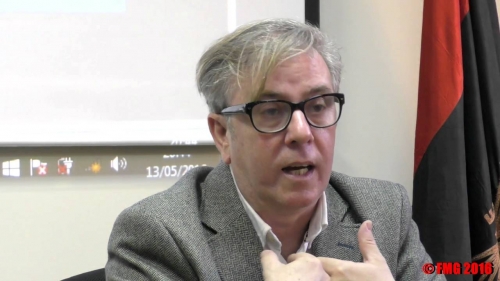
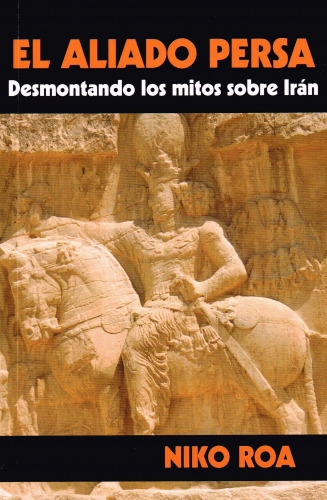
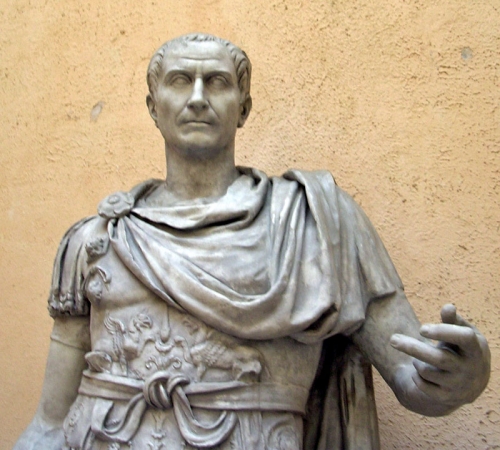
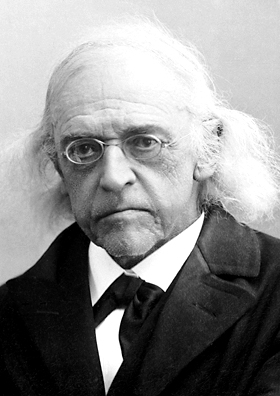 Was de geschiedenis van Rome een voorafspiegeling van die van het Duitsland waarin Theodor Mommsen leefde en stierf?
Was de geschiedenis van Rome een voorafspiegeling van die van het Duitsland waarin Theodor Mommsen leefde en stierf? 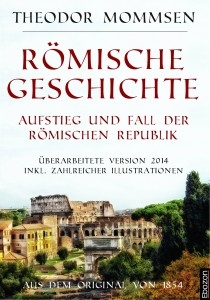 Zijn die harde woorden, die harde oordelen van Mommsen over Bismarck en het door hem verenigde Duitsland wel gerechtvaardigd?
Zijn die harde woorden, die harde oordelen van Mommsen over Bismarck en het door hem verenigde Duitsland wel gerechtvaardigd? 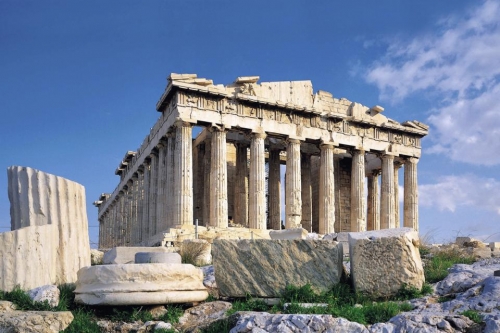
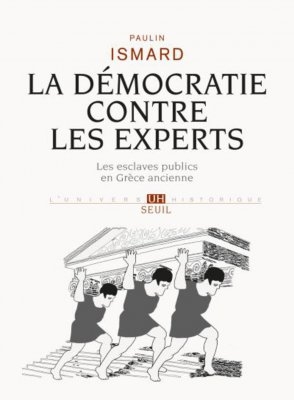 Recensé : Paulin Ismard,
Recensé : Paulin Ismard, 